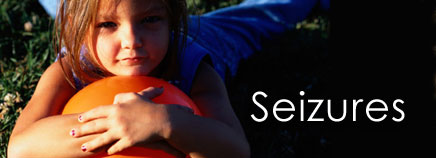
Seizures are caused by a sudden surge of electrical activity in the brain. A seizure usually affects how a person looks or acts for a short time. Someone having a seizure might collapse, shake uncontrollably, or even just stare into space. All of these are brief disturbances in brain function, often with a loss of or change in consciousness.
Seizures can be frightening, but most last only a few minutes, stop on their own, and are not life-threatening. A person who has had two or more seizures may be diagnosed with epilepsy, also known as seizure disorder.
Seizure Basics
Usually, electrical activity in the brain involves neurons in different areas sending signals at different times. During a seizure, many neurons fire all at once. This abnormal electrical activity can cause different symptoms depending on the part of the brain involved, including unusual sensations, uncontrollable muscle spasms, and loss of consciousness.
Some seizures may be due to another medical problem, such as a fever, an infection, a head injury, accidental poisoning, or drug overdose. They also can be caused by a brain tumor or other health problem affecting the brain. And anything that results in a sudden lack of oxygen or reduced blood flow to the brain can cause a seizure. In some cases, a seizure’s cause is never found.
Febrile seizures can happen in children younger than 6 years old. While they can be scary to watch, these seizures are usually brief and rarely cause any serious or long-term problems, unless the fever is related to a serious infection, such as meningitis.
Syncope (SIN-ko-pee), or fainting, is not uncommon in older kids and teens. When it happens, kids might have a brief seizure or seizure-like spell. They might stiffen or even twitch or convulse a few times. Fortunately, fainting rarely is a sign of epilepsy. Most kids recover very quickly (seconds to minutes) and don’t need specialized treatment.
If Your Child Has a Seizure
First, make sure that your child is in a safe place where he or she can’t get hurt. Place your child on the ground or floor in a safe area, preferably on his or her right side. Also:
- Remove any nearby objects.
- Loosen any clothing around the head or neck.
- Don’t try to wedge your child’s mouth open or place an object between the teeth, and don’t try to restrain movements.
Once the seizure seems to have ended, gently comfort and protect your child. It’s best for kids to remain lying down until they have recovered fully and want to move around.
Call 911 immediately if your child:
- has difficulty breathing
- turns bluish in color
- has had a head injury
- seems ill
- has a known heart condition
- has never had a seizure before
- might have ingested any poisons, medicines, etc.
If your child has previously had seizures, call 911 if the seizure lasts more than 5 minutes or is for some reason very alarming to you and you’re worried for your child’s safety.
If your child is breathing normally and the seizure lasts just a few minutes, you can wait until it lets up to call your doctor.
After a seizure, kids are often tired or confused and may fall into a deep sleep (called the postictal period). You do not need to try to wake your child as long as he or she is breathing comfortably. Don’t try to give food or drink until your child is awake and alert.
For a child who has febrile seizures, the doctor may suggest giving fever-reducing medicine like ibuprofen or acetaminophen to ease discomfort.
After a seizure — particularly if it is a first or unexplained seizure — call your doctor or emergency medical services for instructions. Your child probably will need to be seen by a doctor as soon as possible.

